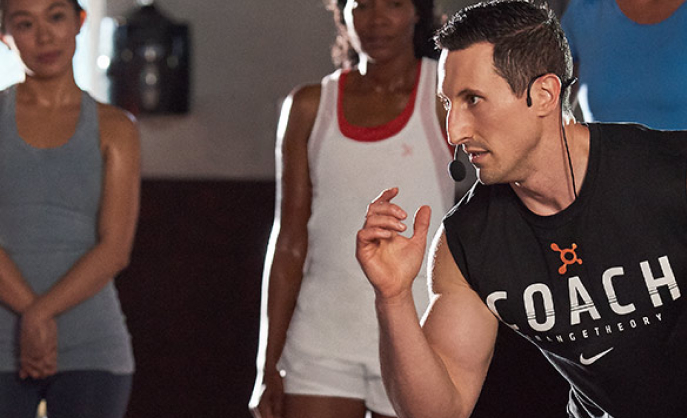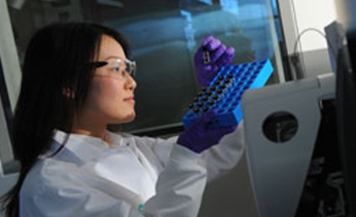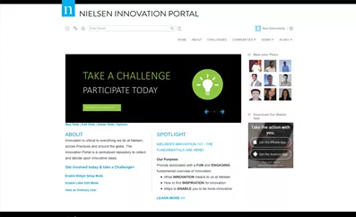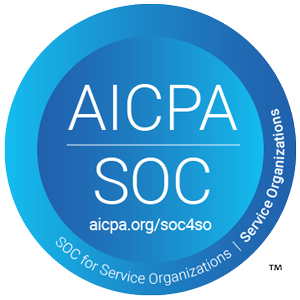“One of the greatest things about Orangetheory is that people tend to think of us as innovative and know us as innovative. It’s an identity we’ve claimed for a very long time.”

KORY KRANING
Director of Concept Development and Experimentation
SUBMITTED IDEAS
130+
EMPLOYEES ENGAGED
670+
VOTES AND COMMENTS
~2,000
Innovation is a core value at Orangetheory Fitness—a science-backed, technology-tracked full-body workout organization. It’s also embedded directly in their company vision: “to be the trusted global leader of innovative heart rate-based interval training.” And by most accounts, they’ve been excelling at meeting these ideals both in and outside the studio.
Since its founding in 2010, Orangetheory has developed a number of new technologies that focus on improving the motivation and health of its members. In 2019, Fast Company named them one of the “Most Innovative Companies” in the wellness category. They are considered the leader in heart rate training and one of the world’s fastest-growing fitness brands with over 1,500 studios in all 50 states and 24 countries and close to 1 million members. Yet, even though innovation is in the DNA of Orangetheory, the process for innovation hasn’t always been as finely tuned as their workouts. About a year ago, Orangetheory set out to improve this dynamic by introducing a new innovation team.

The Challenge
The innovation process, which involves gathering ideas and determining which ones to move forward, was always fairly ad hoc at Orangetheory. .With a global presence, ideas were always “showing up”—whether in department email boxes, word of mouth in a studio, shared across franchises, etc.
“There’s resistance because people don’t want to see innovation taken away from them, but also resistance because people don’t like change. It’s continual management, and one of the most important parts of our job is building trust, having an open and collaborative environment, and setting the model for communication and transparency.”
Ideas were presented and acted on in a more isolated manner, and the execution could differ from department to department or studio to studio. This siloed process often meant that the ideas that gained traction were those with the loudest voice in the room. It also meant that sometimes the department developing a new product might not have the knowledge or insight of another department that would have improved and amplified the ideation process.
To create a more forward-thinking innovation process and ensure that every product, process, or opportunity that goes out to the studios and its members is high quality, Orangetheory brought together a cross-functional innovation team. The team—whose experience ran the gamut from project management, sales and operations to engineering and fitness coaching—would be starting from scratch. Not only would they need new processes and technology to make it all work, but they’d also need buy-in.
The Solution
One of the first pain points the innovation team set out to solve was how to better evaluate which ideas were most impactful. To improve this process, the team created, “councils,” which are groups of 12-15 contributors who engaged directly with the innovation teams through group sessions and discovery calls.
After initially launching with a more manual process, the team began to evaluate several innovation management platforms to better facilitate the council discussions. The team discerned that Brightidea’s on-demand idea management software was the best fit for their highly synchronous process.
After the launch of the platform, they have sanctioned their councils to focus on immediate strategic directives the business has. The team uses the platform to evaluate and stack rank not just ideas, but assumptions and risks that their business and studios may face.
The team moved from a formal, manual process, to something more fluid and collaborative over the course of their launch with Brightidea.
They are active within the Brightidea Whiteboard tool, leading the councils in brainstorming sessions, and cultivating and honoring their values to make a unifying, innovative process for all. “Even if it’s this big strategic plan and no one quite knows how to answer it, they feel really comfortable throwing in post-it notes and sharing their ideas,” said Mandy Becker, Innovation Project Director.

The Results
With only a year under their belt, the new innovation team has implemented the Brightidea technology and developed strategies and processes that show a level of maturity that most teams don’t reach for three to five years.
Soliciting feedback in a timeboxed manner through council calls has allowed the team to gather a lot of ideas in a small amount of time. “We would get a full pipeline process done in three, one-hour calls rather than having it be this open timeline,” said Kraning.
It’s also allowed them to push those ideas into a larger vision, ensuring they are connecting everything they do, directly to the members. They can be more strategic and focused on which ideas are worth the investment. “It’s been a good way for us to get alignment on big and potentially complex topics as we’re working to put plans together,” explained Becker.
Finally, their tightly organized process has also allowed them to move from being a “yes, but…” culture to a “yes” culture. Jenn Presbitero, Director of Program Design, notes that not only are sessions organized and respectful, where everyone listens and takes turns, but she said they also established a rule that no one was allowed to say they didn’t like an idea.
“You were asked to simply state in the positive, in order to make this work, we would need X. The idea was, don’t tell us what we can’t do, tell us what would make it work even if it was crazy, like the cost would be $17 million,” said Kraning.
Today, the innovation team has a lot of momentum and is gaining traction within the organization. In the coming year, they plan to expand this council process further to incorporate feedback from even more of the organization. They also have plans to eventually open up Idea Box for idea submissions to the entire organization and ultimately members.
“Being a new team, we do have a lot that we’ve learned, and we feel is working fairly well. And we are continuously learning and improving and evolving how we do this,” says Kraning.
About Orangetheory
Orangetheory Fitness is an American boutique fitness studio franchise based in Boca Raton, Florida. The first studio was established in Fort Lauderdale, Florida in 2010 by founder, Ellen Latham. The classes are one hour long and involve two groups, one on the treadmills and the other group working with weights or on rowers. Orangetheory Fitness has over 1,300 studios throughout 50 states and 23 countries. Since its founding in 2010, the chain has expanded, surpassing $1 billion in systemwide sales in 2018. As of 2020, the chain has over one million members.
About Brightidea
At Brightidea, we’re passionate about innovation. We believe it’s the lifeblood of progress, advancing the human condition and improving the world around us. To that end, we’ve set out to accelerate the success of innovation by empowering those behind it with advanced software to facilitate and streamline the ideation process—and the collaboration it thrives on.




